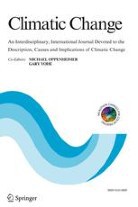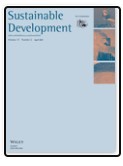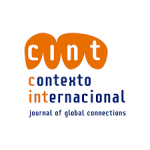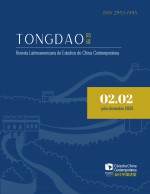Assessing the Impacts of Climate Change on Climatic Extremes in the Congo River Basin

The Congo River Basin, located in central Africa, is the second-largest river basin in the world, after the Amazon. It has a drainage area of approximately 3.7 M km2 and is home to 75 million people. A significant part of the population is exposed to recurrent floods and droughts, and climate change is likely to worsen these events. Climate change studies of the Congo River basin have so far focused on annual and seasonal precipitation, but little attention was paid to extreme climatic events. This study aims to assess future changes in rainfall-induced flash floods and drought regimes in the Congo basin from the present day to 2100, using four selected extreme climatic indices as proxies to these two natural disasters. The indices are the total annual precipitation (PCPTOT), the number of days where rainfall is above 20 mm (PCP20), the standardized precipitation index (SPI), and the standardized precipitation-evapotranspiration index (SPEI). The indices were calculated with the statistically downscaled output of eleven Regional Climate Models (RCMs) from the Coordinated Downscaling Experiment (CORDEX-AFRICA) under two Representative Concentration Pathways: RCP 8.5 (high emissions scenario) and RCP 4.5 (moderate emissions scenario). Precipitation and temperature simulated by the RCMs were statistically downscaled using quantile mapping, while wind speed, solar radiation, and relative humidity were projected using K-nearest neighbor downscaling. The evolution of the indices was then assessed between the reference period (1976–2005) and three future periods (2011–2040, 2041–2070, and 2071–2100). Multimodel average results suggest that (i) independently of the scenario and period, PCPTOT and SPI will increase in the north, east, and western extremities of the basin and decrease in the basin’s center. (ii) The maximum increase (+ 24%) and decrease (− 6%) in PCPTOT were both projected under RCP 8.5 in the 2071–2100 period. (iii) PCP20 will increase independently of the period and scenario. Under RCP 8.5, in the 2071–2100 period, PCP20 will increase by 94% on average over the whole watershed. (iv) The SPEI results suggest that in all periods and scenarios, the rise in evapotranspiration due to higher temperatures will offset annual precipitation increases in the north, east, and western extremities of the basin. Increased evaporation will exacerbate the decrease in annual precipitation in the center, leading to increased drought frequency in the entire basin.








